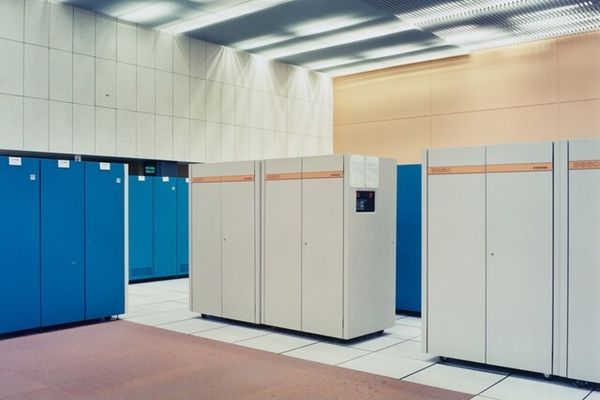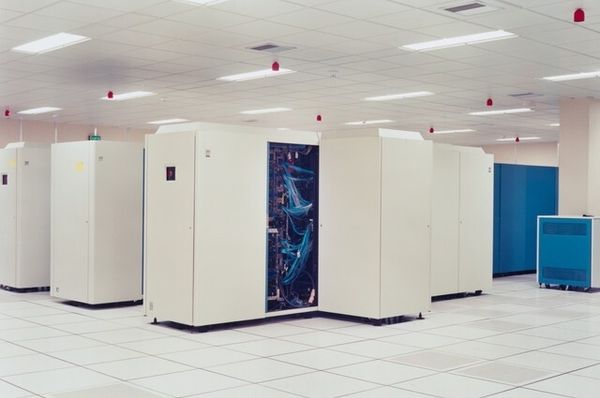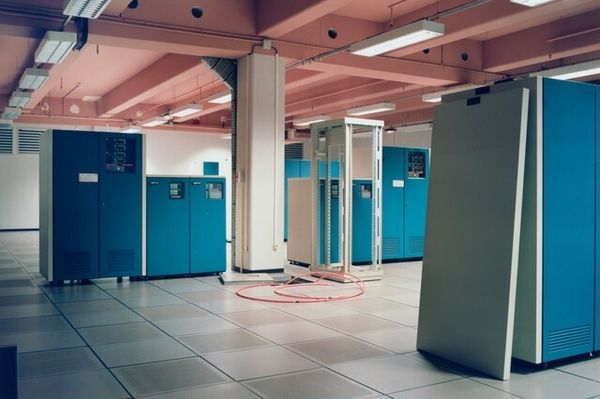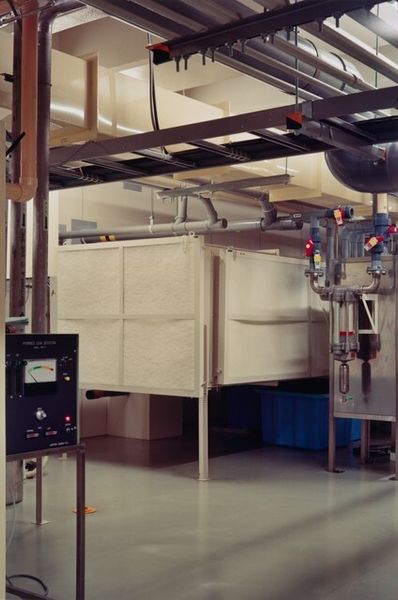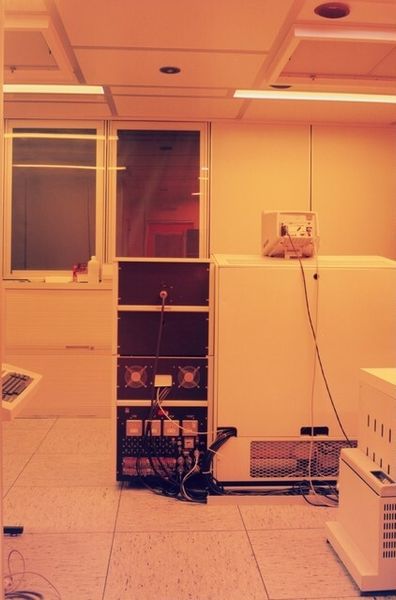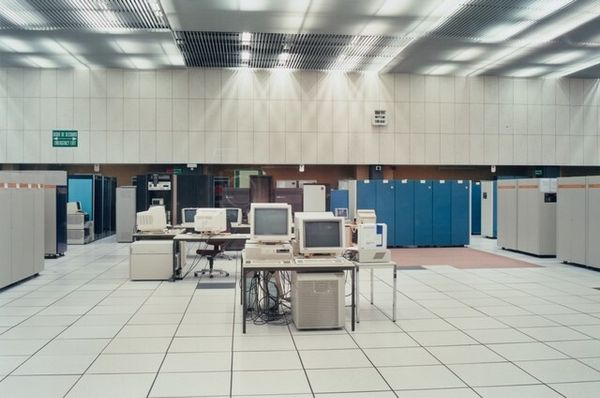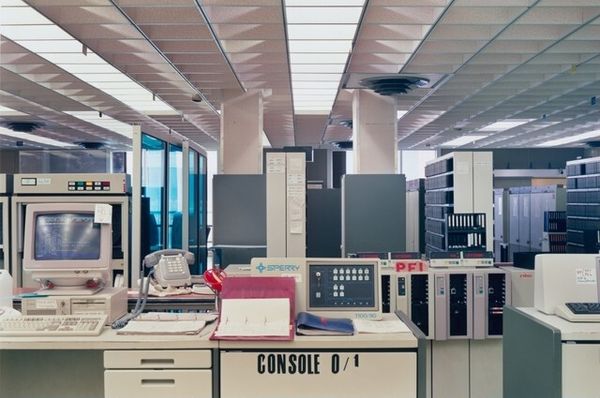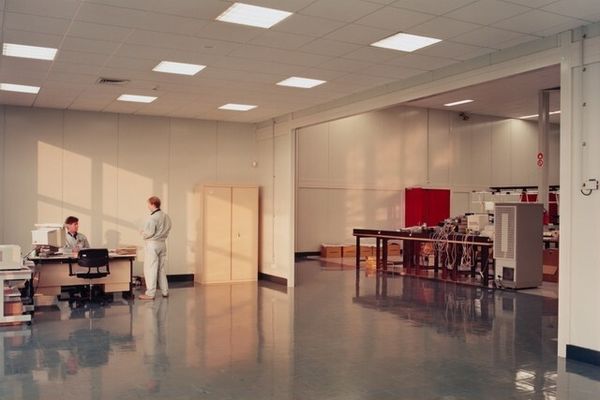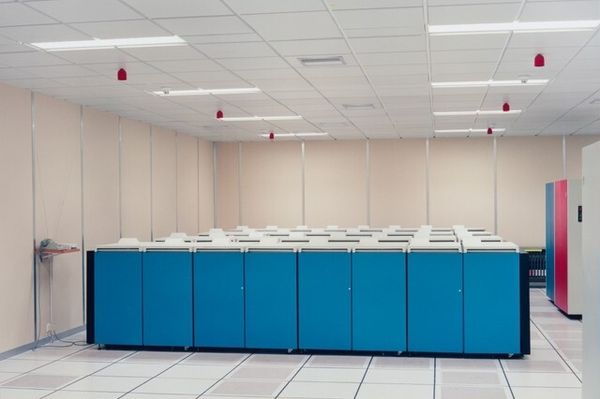
photography
#
conceptual-art
#
building site documentary shot
#
photography
#
modernism
Dimensions: image: 17.5 × 26.2 cm (6 7/8 × 10 5/16 in.) sheet: 28.1 × 35.4 cm (11 1/16 × 13 15/16 in.)
Copyright: National Gallery of Art: CC0 1.0
Curator: The photograph before us, “University of Lille, France,” is attributed to Lewis Baltz and likely taken between 1989 and 2006. What's your initial impression? Editor: Immediate reaction? Bleak. It's a symphony of beige and blue, a data center dream… or nightmare, depending on your coding skills. Makes me think of buzzing servers and the quiet desperation of late nights fueled by lukewarm coffee. Curator: It does evoke a certain coldness, doesn't it? Baltz was a key figure in the New Topographics movement. These artists challenged traditional landscape photography by focusing on industrial and suburban environments, often depicting them in a detached, almost clinical way. He's not offering us pretty pictures, but observations. Editor: Observations… yeah, like watching paint dry, but with a vague sense of impending technological doom. I wonder, were those computers state of the art at the time? Now they just seem like relics, monuments to obsolete technology. And what kind of human activity did these computers do? Curator: It's interesting you bring up obsolescence. One reading of Baltz's work, particularly pieces like this, is about the changing landscape of labor and the increasing presence of technology. This image becomes particularly compelling when understood through the lens of how university structures operate, both physically, ideologically, and politically. Consider how quickly computer technology shifted. And as far as our own experience, think how computers as tools affect our human interactions. Editor: That's where the unsettling feeling comes from. It is sterile, dehumanizing, you can’t even tell whether there were human occupants to this data center. I’m struck by the almost obsessive focus on the architecture of these machines; and those wires are dangling haphazardly in comparison to the uniformity of the boxes, making them feel like veins pumping life or energy. Curator: And how interesting to highlight the wires dangling next to boxes, as a point of difference! With their implied movement, you’ve reminded us of life’s capacity to flow around these structures. Editor: Yeah… maybe there's something poetic here too. A whisper of chaos in a world obsessed with order. Curator: I agree completely, which can bring out how well conceptual art photographs provide rich sources to contemplate the relationships between social organizations and how art mirrors this back to society. Editor: Definitely! Seeing this kind of stark image is such a good reminder that sometimes art should disturb, rather than soothe.
Comments
No comments
Be the first to comment and join the conversation on the ultimate creative platform.
